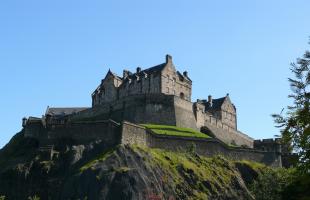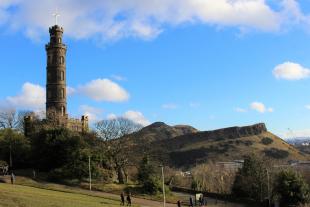Recognised as the capital of Scotland since at least the 15th century, Edinburgh is the seat of the Scottish Parliament and the Palace of Holyroodhouse is the official residence of the British monarchy in Scotland. The city's historical and cultural attractions have made it the UK's second-most visited tourist destination. Time Out magazine rated Edinburgh the best city in the world in 2022.
The University of Edinburgh, founded in 1582 and now one of three in the city, is considered one of the best research institutions in the world, most recently placing 15th in the QS World University Rankings for 2023.
The city is also known for the Edinburgh International Festival and the Fringe, the latter being the world's largest annual international arts festival. Edinburgh's Old Town and New Town together are listed as a UNESCO World Heritage Site, managed by Edinburgh World Heritage since 1999.
-
Edinburgh Castle: this is the ideal place to start your tour of Edinburgh. Discover the eventful life of Mary Queen of Scots. Explore National Treasures. Situated at the top of the Royal Mile on top of castle rock, Edinburgh Castle is Scotland's most-visited paid-for attraction and the most iconic building in the city. Perched on top of an extinct volcano, the Castle and its Esplanade offer unparalleled views across Edinburgh and over the River Forth to Fife. Once inside, don’t miss the Honours of Scotland - the oldest crown jewels in the UK; the Stone of Destiny, an ancient symbol of the Scottish monarchy; 12th century St Margaret's Chapel, the oldest building in Edinburgh, and Mons Meg, the famous 15th century gun.
-
The Royal Mile: The Royal Mile has retained many historic buildings to visit – Gladstone’s Land, The Writers’ Museum, Mary King’s Close, the Tron Kirk, John Knox House and the Museum of Edinburgh. To get a real taste of the past though, explore the many closes and wynds, the narrow passageways that line the Royal Mile. In places like Riddles Court, Tweedale Court, Bakehouse Close and Dunbar’s Close, you will return to the old city.
At the top of the Royal Mile is the Lawnmarket. Do not miss Gladstone’s Land on the north side, the best surviving example of an Old Town tenement from the 17th century. The Edinburgh tradition was for the best apartments to be on the middle floors, with cheaper flats at the top and in the basement.
Further down lies the High Street with the striking St Giles Cathedral, founded during the reign of King David I in the 1130s soon after the founding of the royal burgh. The Cathedral hosted the late Queen Elizabeth II coffin which was brought here in procession from Holyrood Palace in 2022. the Outside the cathedral is the Heart of Midlothian – a pattern of coloured setts (cobbles) which mark the place where the old Tolbooth stood, also used as prison.
The crossing of St Mary’s Street and the Royal Mile marks the location of the Flodden Wall raised after the defeat of the Scots in the Battle of Flodden Field in 1513. East of the wall lay the separate burgh of the Canongate, formed from the abbatial lands of Holyrood Abbey. Today, at the bottom of the Royal Mile is the Scottish Parliament, designed by Enric Miralles.
Abbey Strand ends the mile with the Palace of Holyroodhouse initiated by James IV in the 16th century and remodelled by Charles II in 1670. Close by is Holyrood Abbey, founded in 1128 by King David I. -
Calton Hill: The panoramic views from Calton Hill have astonished and inspired visitors for centuries. Major landmarks can be seen from a bird’s eye view: Arthur’s Seat with the Crags behind Holyrood Palace and the Parliament, Leith and the Firth of Forth, Princes Street in its New Town grid and the Royal Mile climbing up towards the Castle.
Calton Hill is also famous for its collection of historic monuments, which form some of the city’s most important landmarks. One of the most striking is the National Monument, inspired by the Parthenon in Athens. Intended to commemorate the Scottish servicemen who died in the Napoleonic Wars, it was never completed leaving just the twelve columns you see today.
Also look out for the Nelson Monument, shaped like an up-turned telescope. Completed in 1816 the monument commemorates the death of Admiral Lord Nelson at the Battle of Trafalgar in 1805. However in 1852 a time ball was added to the top to enable ships moored in the Firth of Forth to set their time-pieces accurately. The Nelson Monument is open to the public, and the Time Ball still drops at one o’clock six days a week..




